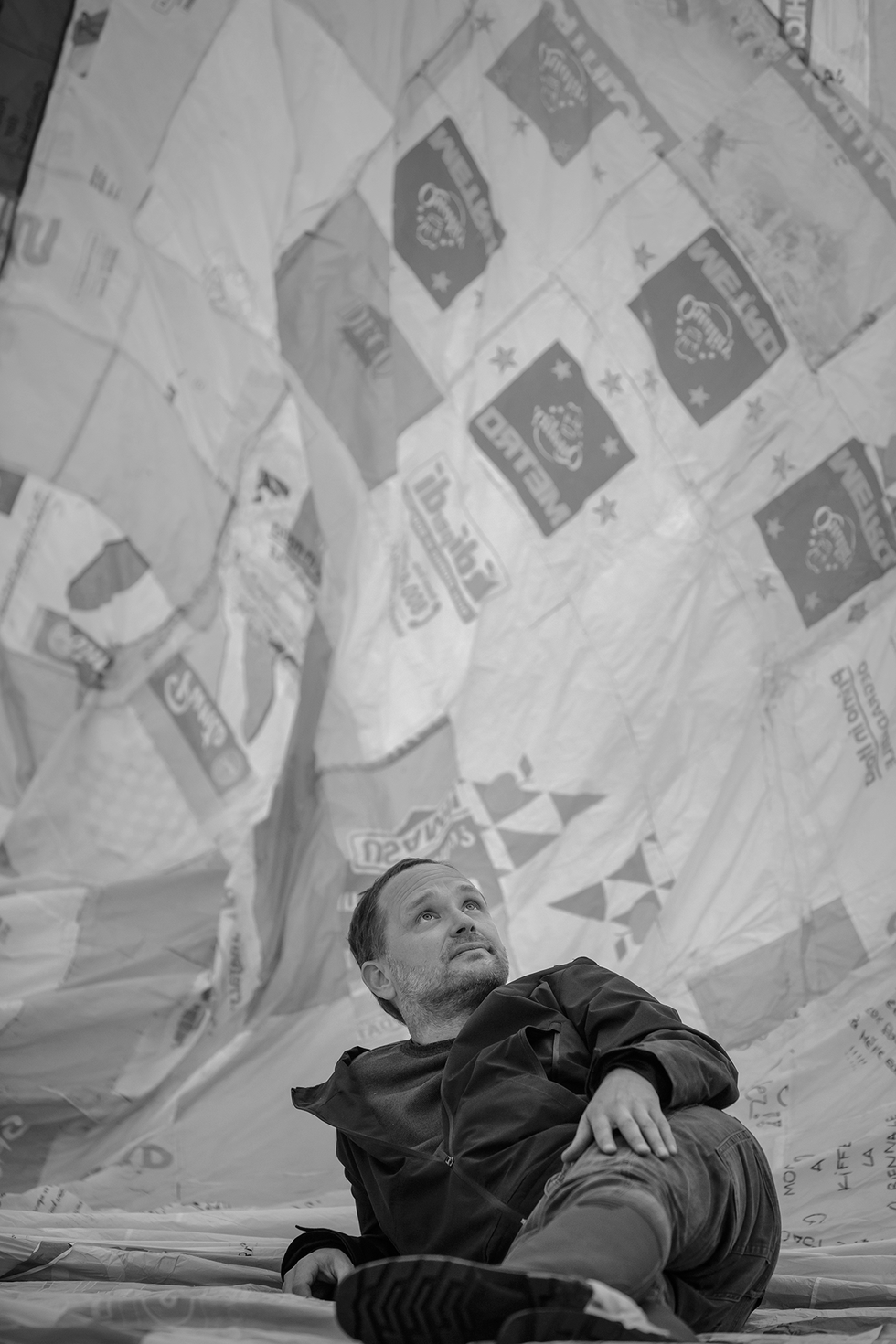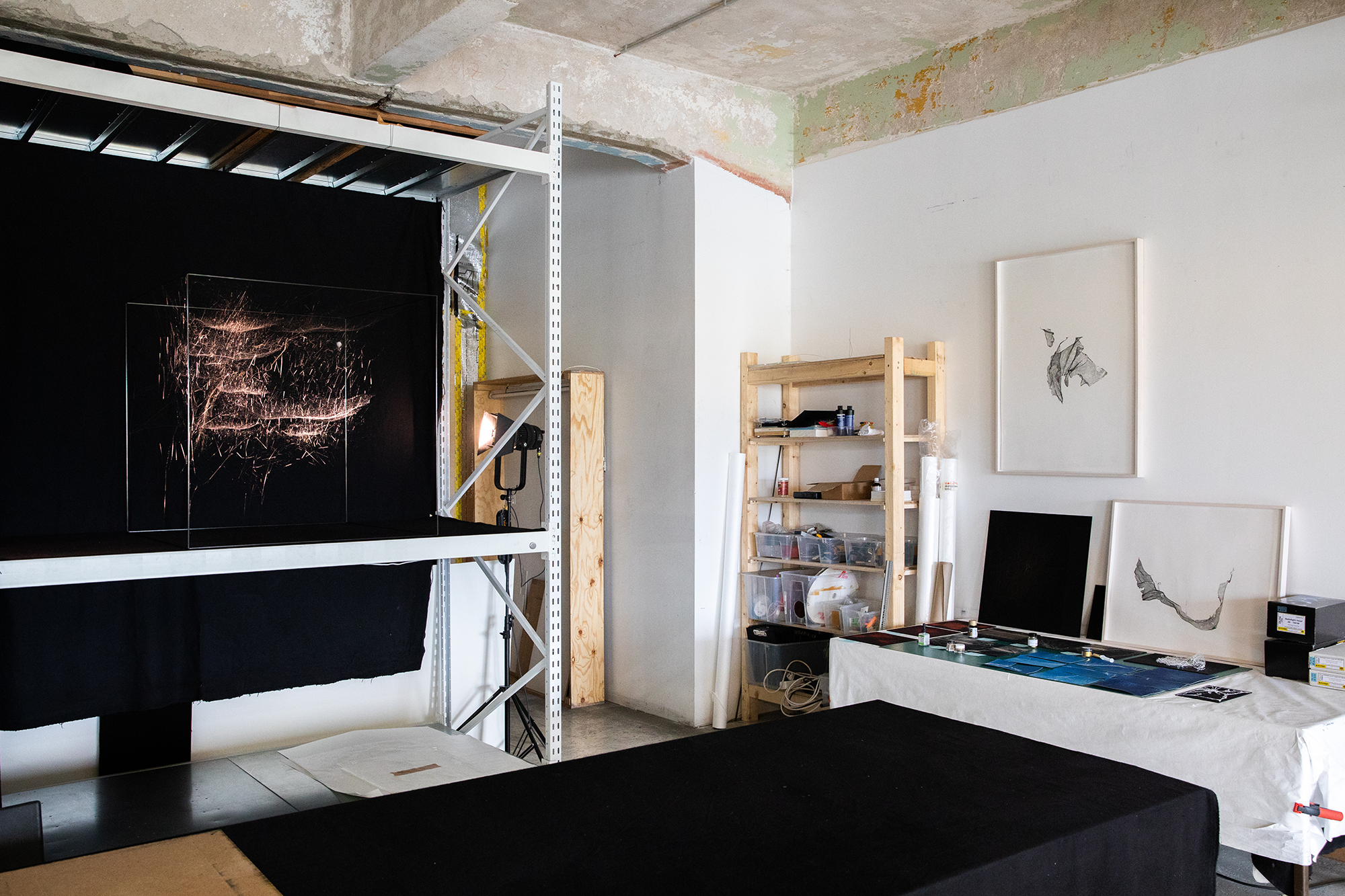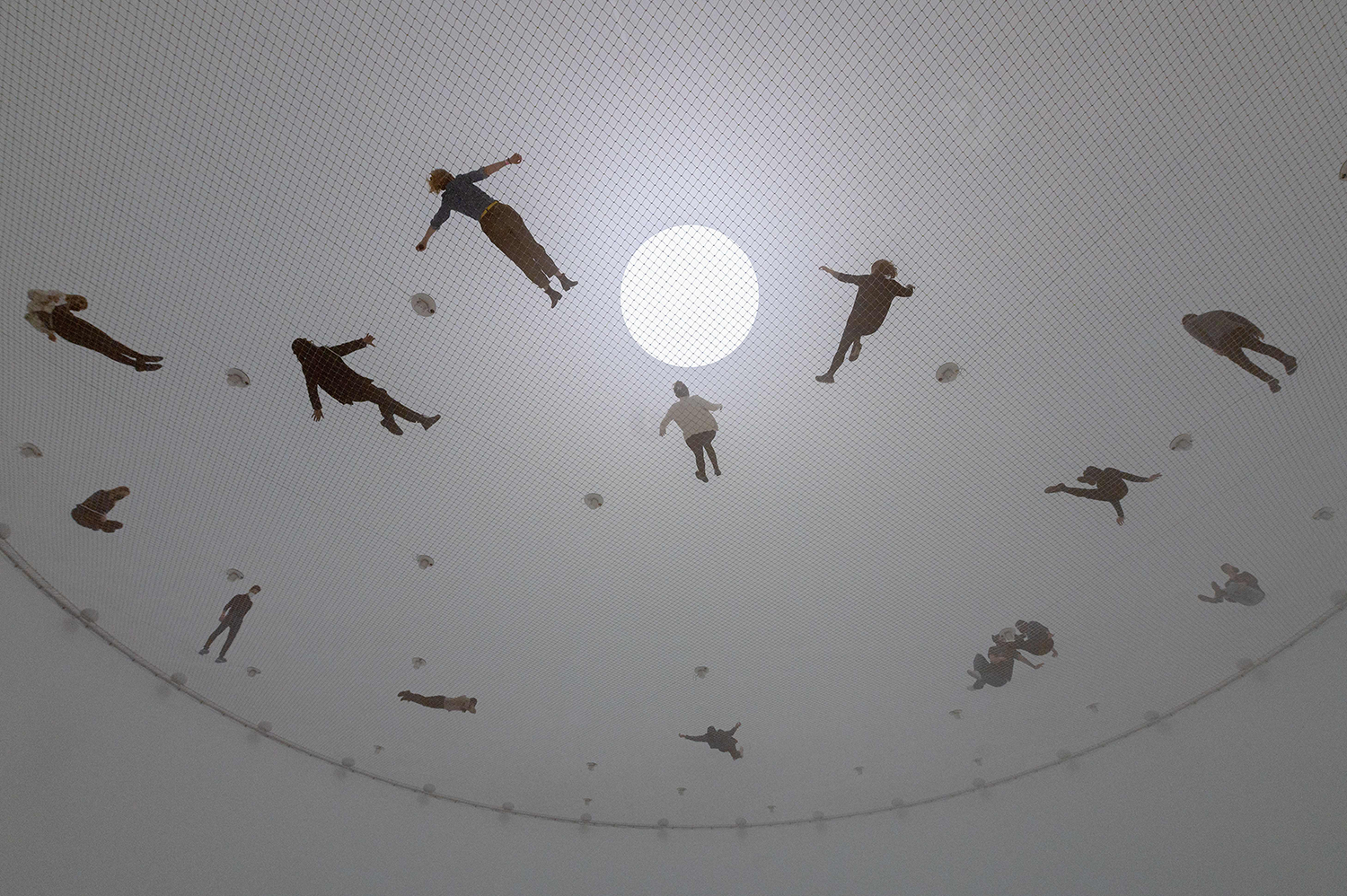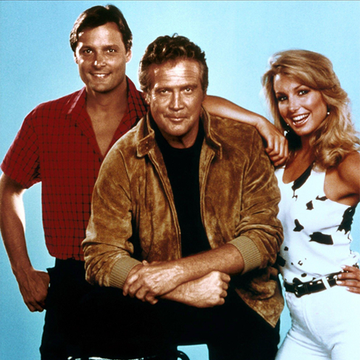It hasn’t been easy for Tomás Saraceno to locate a spider web in his white-walled, plant-filled home in Berlin on this bright, mid-March morning. But here, high up in the corner of the glass doors that lead onto a balcony overlooking the River Spree — down which he can, if the mood takes him, make the short commute to his studio by kayak — he’s in luck.
“I don’t know if it’s a pholcus or a tegenaria, because it’s so broken…” says the 49-year-old Argentine artist, who has wild hair, clear-framed glasses and wears a near-constant cheerful expression as he studies the wispy fragments above him, just visible against the intensely blue sky. “I think it’s a tegenaria, mostly. A kind of house spider. They are beautiful, no?”
Not long ago, Saraceno found an even bigger trove on a visit to the Serpentine Gallery, in London’s Hyde Park, while he was planning the major exhibition of film, sculptures and installations that will open there this summer. He was in the basement, examining the air-conditioning units that maintain the art-preserving gallery conditions — and which, for his show, he intends to turn off — and found, to his delight, that some eight-legged collaborators had already moved in.
“The spider has built his own pavilion in the basement of the gallery!” he says. “We hope that many spiders will come to the exhibition, will weave their webs, and that by reducing the climate control of the gallery, and not using products or materials that are chemically aggressive to these forms of life, then you will see a lot of spider webs. The facility managers are not allowed to broom spider webs any more!”
Saraceno and spiders, it’s fair to say, go way back. When he was a child, and Argentina was on the brink of a military coup, his family relocated for a few years to a village in Italy. He remembers the attic of their house being full of webs, and how he was mesmerised by these delicate, intricate constructions (he would study architecture in Argentina and Italy, and fine art in Germany, where he has lived since 2001).
In the years following, arachnids have often informed his work, from the innovative web
portal that enables users to get their fortunes read by “spider diviners” in Cameroon (for a fee that goes directly to the diviners and local projects there), to his exhibition at The Shed in New York last year, where visitors were invited to lie on, and feel vibrations through, two gigantic steel webs strung across the central space (The New York Times called the show “revelatory”).
He likes them not only for the intricacy of the structures they make — he has made beautiful, spectral sculptures in which different spider species weave webs on top of each other’s — but also for the blurring of boundaries they invite. Take, for example, the idea that the spider and its web are two separate entities: “The web is part of their body,” he says. “They cannot eat until they sense through their webs. You can get a spider, you can put a cricket in front and spider doesn’t see it, will not eat it! The web is a way to sense the world.”
One consistent theme in Saraceno’s work, which is often visually spectacular and scientifically ambitious (he works with MIT and has studied at Nasa), it that it asks us to question the rigid classifications that we accept, and to scrutinise the social, technological, environmental “webs” in which we live. As well as spiders, another returning motif is balloons: most notably an ongoing initiative called Aerocene, which explores the potential of human flight via enormous balloons powered only by solar energy and air currents (it currently holds 32 world records) and asks us to think about who — from military organisations to micro-organisms — owns and occupies the air.
Both these elements of his work will be represented at the Serpentine show, which will include the project with the Cameroonian spider diviners and the amalgamated spider-web sculptures, as well as a church confessional, bought second-hand in Italy, in which he hopes spiders, rather than priests, will hear your sins. There will be a film and textiles relating to the Aerocene project, focusing on flights across Argentina’s Salinas Grandes, which raised awareness of the environmental damage being caused there by lithium extraction, as well as some smaller-scale flights in Hyde Park itself (should The Royal Parks, figuratively at least, get on board).
But perhaps even more ambitious than the works themselves is the guest list. “The exhibition is not meant to be only for humans, right?” says Saraceno. “We are working a lot with birds, and with all the plants and animals who live in the building, or even outside the building.” The plan is to make the gallery as attractive to foxes, squirrels and pigeons as it is to millennials with tote bags (his dream attendees? A nesting pair of swifts). There will be, he says, a “painting exhibition for dogs”, for whom, he explains, the “colour red is very bad”, and a space with a doorway so small that only children will be able to get in. “Art critics might need to send their kids in — or the kids of someone else — to know what’s going on in that room!”
Even the spaces adult humans can fit into might not contain much to see on certain days, as the show will be powered by solar energy, which, if the sun isn’t obliging, could mean that a screen can’t turn on or a film can’t run. This, Saraceno says, is to prompt us to consider “the inequality of who has the right to consume energy and who doesn’t”, and to adapt to the weather-dependent way of thinking that climate change will necessitate. “We need to accommodate things much more,” he says. “To do things that the planet asks.”
Planning a show that depends on weather, and light, and the potential engagement of other human and non-human participants, might seem, to put it mildly, a little stressful. Saraceno, though, displays impressive equanimity: “Let’s say by the day of the opening it’s very cloudy — half of the show you will not see! And it’s OK.” And anyway, today the sun is out, and Saraceno is not paddling to his studio, but staying in for the delivery of a piano. His partner’s eight-year-old daughter wants to learn, so they’ve arranged to “play to the birds and to the spiders”, he says. Somewhere, in the hard-to-reach corners above him, his audience awaits.
Tomás Saraceno in Collaboration: Web(s) of Life is now open at the Serpentine, London; serpentinegallery.org

Miranda Collinge is the Deputy Editor of Esquire, overseeing editorial commissioning for the brand. With a background in arts and entertainment journalism, she also writes widely herself, on topics ranging from Instagram fish to psychedelic supper clubs, and has written numerous cover profiles for the magazine including Cillian Murphy, Rami Malek and Tom Hardy.















